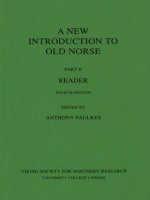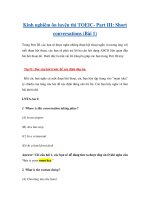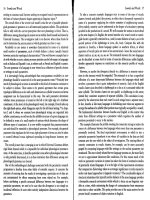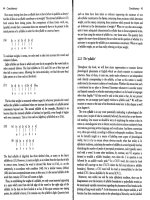Slide Linguistics Word Structure, Part II
Bạn đang xem bản rút gọn của tài liệu. Xem và tải ngay bản đầy đủ của tài liệu tại đây (78.77 KB, 26 trang )
Linguistics
Word Structure, Part II
Outline
• In looking at morphology we are examining the
relationships that words have to one another, and to
the morphemes that are assembled into complex
structures
• Two further themes
– Different kinds of morphology: inflection vs. derivation
– What is a word? What can go into a word?
• We’ll see along the way how languages differ in terms
of the distinctions we’ve introduced
• Conclude with questions about morphology and
syntax
I. Inflection and Derivation
• Inflection: Creates new forms of the same word in a way that
introduces or expresses different grammatical properties, while
retaining some core notions of meaning (and category)
• Example:
Play and Played describe the same action, but situate it
differently in time.
Inflectional categories
• Languages differ with respect to which categories are
expressed inflectionally on e.g. verbs. English, for instance,
expresses Person (1st person, 2nd person, 3rd) in a limited
way, as well as tense:
Present Past
1spraise
prais-ed
2spraise
prais-ed
3spraise-s prais-ed
1ppraise
prais-ed
2ppraise
prais-ed
3ppraise
prais-ed
(s = singular, p = plural)
• Notice that marking for Person is not found in Past
Comparison
• The expression of such inflectional categories is limited in
English. Compare Latin (lauda:re ‘praise’):
Present
Past (imperfect)
1s laud-o:
lauda:-ba-m
2s lauda:-s
lauda:-ba:-s
3s lauda-t
lauda:-ba-t
1p lauda:-mus
lauda:-ba:-mus
2p lauda:-tis
lauda:-ba:-tis
3p lauda-nt
lauda:-ba-nt
Comparison, cont.
•
In the English and Latin comparison, we are talking about the
same abstract categories in some sense: Tense and
Person/Number
•
Languages express different notions in verbal marking:
•
Classical Greek: Dual as well:
• Lu-ei `he/she/it looses’
• Lue-ton `they-2 loose’
• Luo-usi `they loose’
Another example
• Example 2 : (Some) verbs in Tepetotula Chinantec
differ for whether the object is animate or inanimate:
The verb here is ‘abandon’:
Inanimate
Animate
1s
1p
2(s/p)
3(s/p)
tíLM
tíLM
tíLM?
tíM
téNLM
téNLM
téNLM?
téNM
So, if you want to say ‘I abandoned my friend’ versus ‘I
abandoned the house’, you have to use different verb forms
Synopsis
• Languages differ in terms of
– What type of information is expressed in different categories
of words; and
– How many distinct means of marking such differences there
are
• A further point of cross-linguistic difference concerns how much
can fit into a single word, and how we are going to define word
for different languages in the first place (see below)
Inflection, cont.
• Some general properties associated with inflection,
generalizations which hold for the most part:
– Inflection does not change syntactic categories. E.g. kick-s
is still a verb, even with its inflectional suffix
– Inflection expresses grammatically required features or
relations (e.g. agreement, tense, etc.)
– Inflectional morphemes occur outside of derivational (see
below) morphemes: ration-al-iz-ation-s
• As a general way of thinking of this, inflection creates
new forms of the same word; derivation is thought to
create a ‘different’ (but related) word
• Some inflectional morphemes in English:
--ed (past tense), -s (plural), etc.
Derivation
• As a basic working definition, derivational morphology
creates new words from existing ones. Basic
properties:
– Change of category or part of speech (noun, verb, adjective)
is possible: pay, pay-ment
– New meaning added: e.g. re-do means to ‘do again’
– Inflection often has syntactic connections outside of the
word, (e.g. agreement relates a subject to a verb). This is
not so if we have e.g. kind/unkind; the change doesn’t relate
to anything external
– Sometimes not productive (it sometimes doesn’t attach to
some words) or unpredictable meanings:
• Destroy/destruction; employ/*empluction/employment
• Transmit ‘send’; transmis-sion ‘sending’; ‘car part’
Derivation: Examples
Morpheme Function
-(a)tion
verb --> noun
deviate, devia-tion
-alnoun --> adjective
institution, institution-al
-ize
noun --> verb
color, color-ize
-like
noun--> adjective
dog, dog-like
un-Karl Farbman-like
Further aspects of derivation
• Derivation is not necessarily category-changing; sometimes it
creates a new word with the same category as the root/stem,
but with a different meaning:
king, king-dom
star, star-dom
• But nounhood is a property of -dom in this case, as is clear from
instances in which it attaches to other categories:
free, free-dom
Some unpredictability
• In many cases, the same kind of derivational pattern
shows differences in form; take e.g. verb --> noun:
1) -al
refuse
refus-al
arrive arriv-al
2) -ion
confuse
confus-ion
extend extens-ion
3) -ation
derive derivation
confirm confirm-ation
4) -ment
confine
confine-ment
treat
treat-ment
This is in a sense allomorphy: the form of the nominalizing affix
is something that depends on what host the affix is attached
to (put differently, the different affixes only attach to certain
hosts)
Additional Interactions
• Often the distinction between derivation and inflection is used
as a helpful tool, not an absolute distinction
• Consider some additional cases in terms of our criteria above:
Formation of gerunds in -ing:
John destroyed the house.
John’s destroying the house (upset me).
Gerunds, cont.
•
Formation of the nominalization in -ing is
–
General: we can take whatever verbs we think of and form
such nominals
–
Shows no allomorphy: all such nominals show -ing.
Sometimes there is more than one denominal verb:
1) John’s destroying the city
2) John’s destruction of the city
There is a sense in which the second is more ‘nounlike’
than the first
•
General point: This type of case meets some of the
criteria for both inflection (regularity, productivity)
and for derivation (category change)
II. What’s in a word?
• Recall our division of morphemes along two lines: free vs.
bound and content vs. function:
Content
Function
Bound
cran-
-ed
Free
dog
the
• Languages differ in terms of how they divide up this crossclassification; many languages have more morphological
(bound) marking than e.g. English
– Relatedly, languages differ in terms of what can go in a
‘word’ (we can try to define word below)
Words
• One way to think of this is in terms of some counting exercises;
how many words in
John ate the apple
• How about
I’ll eat the apples later.
I will eat the apples later.
I didn’t eat any apples yesterday
Distinctions
• Phonological Words: An object that forms a single unit for the
purpose of phonology
• (Syntactic) Word: A single object for the purposes of the syntax
Example:
I’ll eat the apples later.
Here I’ll is a single phonological word. But if we think that this
sentence has the same syntax as I will eat the apples later, this
single phonological word is composed of two syntactic words
Complex words
• Languages differ greatly in terms of what they package into their
words (relatedly, in terms of what is expressed as bound or free)
• Some languages pack a great deal into single (phonological)
words:
English:
They treated us in that way
Hupa (California, Athabascan)
‘a:yanohch’ilah
Analysis
• The Hupa example:
‘a:yanohch’ilah
‘a-
ya- noh-
ch’i-
lah
thus PL 1Pl-Obj 3rdPl-Subj treat
• In this language and many others, what is expressed in English
with many free morphemes is expressed in a single
phonological word, with many bound morphemes
Incorporation
• Noun Incorporation
– Mapudungun
Ni chao kintu-waka-le-y
my father seek-cow-TNS-3s
‘my father is looking for the cows’
• Here, the meaning of the phrase “look for cows” is expressed in
a single word (they can express it with a separate noun as well).
• This is similar in many ways to what happens in compounding in
English; remember truck driver. In English, though we can’t use
this as a verb *I truck-drive.
• But, in Mapudungun (and many other languages!) these
strutures are not restricted to nouns; they happen with verbs as
well.
‘How much’ Morphology
• Languages are often described in terms of whether
they have little (English, Chinese) or rich (e.g. Hupa,
Latin) morphological systems
• Further distinctions: whether meanings are
“combined” in morphemes, or separated into different
morphemes:
– English: from our islands
– Latin: insul-i:s
nostr-i:s
island-ABL.PL. our-ABL.PL
– Turkish: ada-lar-ImIz-dan
island-PL-OUR-ABL
Syntax/Morphology
• What do the examples on the last slide show? At some level of
description, languages express the same meanings in different
ways, ranging from “more syntactic” (English) to “more
morphological” (Turkish)
• This suggests that there is no sharp dividing line between a
“word system” (morphology) and a system for assembling words
into phrases etc. (syntax)
• Some more thoughts along these lines…
Morphology and Syntax, cont.
• With morphology we refer to the study of words and their
structure, while with syntax we refer to the structure of larger
objects (phrases, clauses)
• Examples:
– The black board (phrase = syntax)
– The blackboard (2nd part is a word=morphology)
• In some cases, the distinction between these two domains of
study is blurred as well
Interactions between syntax and
morphology
• Consider how comparatives and superlatives work in
English
– Comparative: tall, tall-er
• In cases of this type, the comparative seems to be a
kind of (inflectional?) morpheme, creating a
comparative adjective from an adjective
• But:
Think of more adjectives
smart, smart-er intelligent, *intelligenter
Note that the comparative of intelligent requires a
phrase:
more intelligent









